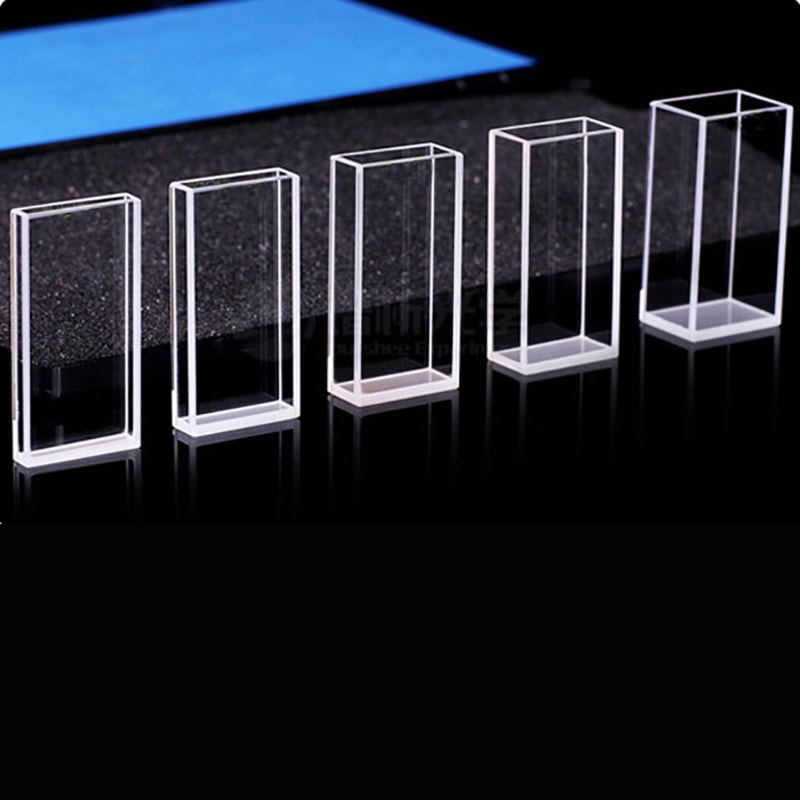The spectrotometry technique is the cornerstone of scientific discovery it is a method to unravel the mysteries of light absorption and transmittance at specific wavelengths. The cuvette is the core of spectrophotometry. It is a small yet vital container used to hold samples for analysis. They may seem easy to make, but their complex, from cuvette’s length and material selection, hold the key to unlocking accurate information on the concentration of substances and their the purity of the substance. Explore the fascinating world of cuvettes as well as their dimensions. They influence the outcome of all experiments.
Power of Cuvette Path length
Imagine a light beam passing through a sample what happens is heavily dependent on the cuvette’s path length which is the length of time light passes through the liquid. A typical 1 cm path length cuvette is usually the go-to for many laboratories, and is able to strike a balance between sensibility and practicality. What’s the reason? The longer the distance extended, the greater amount of light is absorbed. This will increase the signal in the dilute samples. A shorter path can make a big difference for concentrated solutions like nucleic acids or proteins. It eliminates the need for dilution while preserving valuable samples, and cutting down on the amount of preparation time. What’s the main takeaway from this? It is an art to ensure that the length of a path is in line with specifications for the sample. This increases accuracy.

Image credit: cuvet.co
Cuvette Dimensions and Size: There’s More to it Than You Think
The dimensions of a cuvette is not just the amount of liquid it can hold however it is also how it interacts with the instrument. Cuvettes come in range of sizes and shapes and are each designed to meet specific requirements. Semi-micro cuvettes for instance are smaller in size and thicker wall thicknesses are made to handle small volumes of samples. Think of a couple of nanoliters or an uncommon biological extraction. The walls that are thicker reduce the amount of space within which lets light travel through without any loss of droplets. Compare this to a standard cuvette, the difference is stark with fewer steps for pipetting more room for error and results that stand when tested. This clever trick proves size is not just a number, but a method of doing business.
The 1 cm length of the path Cuvette is a laboratory favorite
Why does the 1 cm path length cuvette reign supreme in so many experiments? It is ideal to measure biological parameters when samples are scarce and milliliters are a lot. This design is a classic and provides reliable reads of absorbance while not overloading the detector. It’s suitable for all kinds of tests, including DNA purity tests to enzyme tests. However, it’s not an all-purpose super-skill. If you swap it out for a cuvette with an entirely different geometry or length, for instance one for studies on emission The results could be extremely distorted. It is vital to choose the right instrument and not just the one you feel most comfortable using. A wrongly matched cuvette could be compared to a poorly tuned instrument.
Material Matters: Beyond Path and Size
Cuvette dimensions only tell a portion of the story. The choice of material is the final word. Glass and quartz cuvettes are notable for their exceptional transmission which allow light to pass through with no interference. They’re durable and reuseable. This makes them perfect for spectroscopy. On the other hand plastic cuvettes can be found in a variety of sizes, offering affordability and ease of use. No cleaning, no cross-contamination. Just use and toss. These are perfect for tests using aqueous solutions or DNA/RNA tests. The price? less accuracy in certain wavelengths. Quartz is the material of choice for purists, while plastic is the material of choice for the pragmatic.
Accuracy in Practice
Cuvettes’ versatility is the reason they are attractive. With spacers, short paths can be used for handling concentrated samples. Larger vessels are to handle larger volumes. Every choice path length, size, and material ripples through the experiment making clear the outcomes. Labs are measuring one of the most rare proteins. A semi-micro cuvette that has a narrow pathway will be able to avoid the dilution issues and produce precise results in a short time. Contrast that with a sloppy change of cuvettes during the experiment, and the numbers falter. It’s a reminder that in spectrophotometry the small details can have the most impact.
Cuvettes may be small however, their function is huge. From the 1cm path length cuvette, to custom-designed dimensions they bridge the gap between sample and understanding. If you’re looking for pureness or concentration with the proper cuvette, it can transform the best measurement into a superior one-of-a-kind proof of the fact that in science, precision begins with the instruments at disposal.